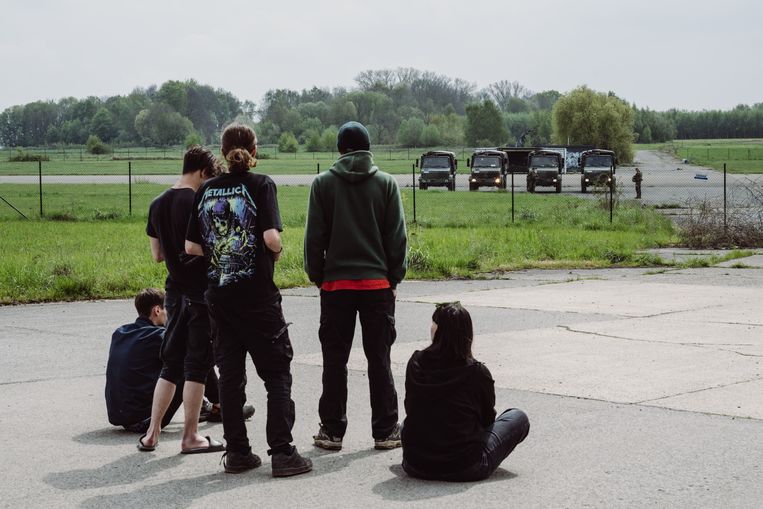NASA is taking close-up shots of the south pole of the moon to select an Artemis 3 landing site
200 times the performance of existing cameras, using reflected light and earth light to peel away the flesh of the permanent shadow zone
President Yoon Seok-yeol’s visit to NASA Headquarters 4 days later, introduction of achievements ‘attention’
“(Korea’s) Danuri’s ShadowCam is doing its job well.”
On the 29th of last month (local time), the U.S. National Aeronautics and Space Administration (NASA) released the results of a detailed exploration of the lunar surface taken by Korea’s first lunar probe Danuri through the payload Shadow Cam on the main page of its website. On the 25th of the same month, South Korean President Yoon Seok-yeol visited NASA headquarters, and this material, which was uploaded to the main page four days later, continues to decorate the main page of the NASA homepage as of the 1st.
About this, NASA said, “(Late last year) the success of Artemis 1 and the recent selection of Artemis 2 crew members (after 2025), preparations for Artemis 3 to explore the south pole of the moon for the first time in human history are well underway.” “We are learning as much as possible about the lunar shadow zone, which promises deep space exploration and scientific discoveries that will help us understand the Earth.”
At the same time, NASA focused on introducing Danuri and Shadow Cam. NASA said, “One of the ways to gather information (on the permanent shadow zone) is to use a high-sensitivity optical camera named Shadow Cam.” It was mounted on the Danuri (Korea Pathfinder Lunar Orbiter, KPLO) along with five other Korean-made scientific instruments.”
The Shadow Cam mounted on Danuri is a symbolic project of Korea-US space cooperation. Until now, Korea, which has only a handful of experience in space development, has never had a cooperative relationship with the United States other than requesting a satellite launch. On the contrary, the United States has ‘virtually’ obstructed the development of the Nuri on the grounds of the Missile Technology Control Regime (MTCR) and the International Traffic in Arms Regulations (ITAR). However, the production and launch process of Danuri was different. This is the first full-fledged case of cooperation between South Korea and the US in the space sector. Hangwoon received a proposal from NASA and mounted a shadow cam. The money was not received, but Danuri’s deep space navigation technology and know-how, and deep space communication network were supported. In order to save fuel and extend the lifespan of the mission as much as possible, Danuri succeeded in entering lunar orbit after four months of deep space navigation through a ballistic lunar transfer orbit (BLT), which had never been attempted before. It was a technology that had never been attempted by anti-coincidence, who had no experience other than launching and operating satellites. It is known that navigation technology, such as difficult direction changes and delicate propellant operation to enter lunar orbit, would have been impossible without NASA’s cooperation. In addition to the deep space antenna network that Hangwooyeon built on its own for communication with Danuri, it also received support from the United States.
![[과학을읽다]Why did NASA praise 'Danuri Shadow Cam' out of nowhere?](https://i0.wp.com/cphoto.asiae.co.kr/listimglink/1/2023041214590286475_1681279143.jpg?w=900&ssl=1)
[이미지출처=연합뉴스]
Shadow Cam, a symbol of Korea-US space cooperation, was jointly developed by Marlin Space Science Systems, a private US company, and Arizona State University (ASU). Compared to other previous moon observation cameras, it boasts excellent light sensitivity. This is to photograph the Permanent Shadow Zone at the South Pole of the Moon, where sunlight has never been exposed. The main mission is to select a candidate area for the Artemis 3 lunar landing, the second lunar landing exploration project of mankind after 2025. It plans to take high-resolution images and map them for exploration and rover operation of the Permanent Shadow Zone at the South Pole of the Moon, which is believed to have ice-type water buried underground. To this end, it boasts more than 200 times better performance than the camera (NAC) mounted on the lunar orbiter LRO launched by NASA in 2009.
On the same day, four days after President Yoon’s visit to the headquarters in Washington, DC, NASA released representative images taken so far through Shadow Cam. The first image is a high resolution image taken by ShadowCam of Skeleton Crater located near the lunar south pole. The topographical features of the surface are vividly revealed to the extent that the traces of rocks rolled down are intact. NASA said, “The Shadow Cam can operate in extremely low light conditions, so it is possible to take images of this level.” . In particular, with regard to the vividly recorded traces of rocks that have fallen from the crater’s high walls, he emphasized that “we can improve our understanding of the geotechnical characteristics of the moon by finding out the rock shape, speed and characteristics of the topsoil.”
![[과학을읽다]Why did NASA praise 'Danuri Shadow Cam' out of nowhere?](https://i0.wp.com/cphoto.asiae.co.kr/listimglink/1/2023050115355817029_1682922958.jpg?w=900&ssl=1)
‘Shadow Cam’ found in Danuri. Photo source = Provided by the Ministry of Science and ICT
NASA also released detailed photos of the lunar surface using faint reflected light or earthshine. The moon is illuminated by ‘earthshine’, just like the moonlight on Earth. From the moon, when it is seen as a ‘crescent moon’ from the earth, the entire earth is seen like a ‘full moon’, and ‘earth light’ is the strongest like ‘moonlight’. However, it is only 1/10 the intensity of reflected sunlight. During the test operation, Shadow Cam successfully captured the inside of Bruce Crater near the lunar equator by using it during the new moon period when earth light was strongest, demonstrating its outstanding performance. In addition, images of detailed images such as Marvin crater were also released using reflected light in the permanent shadow zone, 26 km from the south pole of the moon.
Reporter Kim Bong-soo bskim@asiae.co.kr
2023-05-01 06:10:00
#과학을읽다Why #NASA #praise #Danuri #Shadow #Cam


